Posted by: Jennifer Schultz, ECO Canada
Many environmental professionals develop strong technical skills and are experts in their field. But how do you take this expertise and advance into a leadership or management role?
Unfortunately, your technical skills can only take you so far to becoming an effective leader.
Here’s why: effective leadership requires strong business skills and emotional intelligence.
But what kind of business skills do you need to succeed?
In part one of this blog series; you’ll learn why effective communication skills will help you advance your environmental leadership.
Effective communication defined
Effective business communication = knowing your audience + choosing the right message + choosing the right channel.
Great communicators can apply their communication skills in a variety of situations and environments. They can communicate with ease with large audiences, small groups or one-on-one.
Strong communication skills matter in the environmental sector. Environmental work can be highly technical, with multiple stakeholders involved. Effective communication skills are required to translate complicated messages into simple, clear, actionable ideas.

Are you a good communicator?
Your resume may indicate you have great communication skills, but how do you really know if you’re a good business communicator? Check; Kroger Weekly Ad, ALDI Weekly Ad, ALDI Catalogue, IGA Catalogue, Meijer Weekly Ad, Publix Weekly Ad, Coles Catalogue, Supercheap Auto Catalogue, CVS Ad.
Ask yourself the following questions:
- Before you communicate, do you think about what the person needs to know and how to best convey it?
- Do you anticipate or predict possible causes of confusion up front?
- Do you try to help people understand the underlying reasons behind the point you’re making?
- Do you consider cultural or age barriers when you’re communicating?
- Do people actually remember what you’ve told them?
If you’ve said no to any of the above, you may need to brush up on your communication skills.
5 Ways to Improve your Communication Skills
1. Start with Listening
Great leaders understand that they should be listening more than talking. Which is why listening is one of the most important aspects of effective communication (and why it’s number one here).
Effective listening requires understanding the message being communicated and the underlying emotional reaction of your audience.
- Listen with an open mind and don’t interrupt or judge before they’re done. Don’t think about your next point, but focus on the speaker and the words they’re saying. This is easier said than done and will take practice.
- Show the speaker that you’re listening! Nod your head, lean forward and maintain eye contact.
- Be wary of your body language. Avoid behaviours like crossing your arms, being fidgety or multi-tasking. These behaviours make the speaker feel what they’re saying is not valuable.
Improving your listening skills is a conscious and deliberate effort. Identify situations where you can establish trust and build better relationships by effectively listening.

2. Know your audience
Whether communicating to one person or a thousand, you need to understand your audience first before you start talking or write that email. Know who they are, what matters to them and their goals.
- It’s not about you! While you may want to go into depth about a topic, your audience may not care for that level of detail.
- Tailor your language to your audience. Avoid using acronyms or technical jargon that could be confusing. It never hurts to spell out a concept the first time so everyone is on the same page.
- Adapt your message when necessary. What works for one person, may not work for another.
3. Choose the right channel
In fast-paced jobs like those in the environmental sector, it’s easy to shoot across an email and assume your message was fully understood. And this medium may work if it’s relatively simple task or idea you’re conveying.
But when communicating complex ideas or instructions, remember that face-to-face should be your number one choice. It is by far more effective and is vital to establish trust and build relationships with your stakeholders.
Why?
- Face-to-face interaction is information rich. People not only hear what you are saying, they also perceive your tone, voice inflection, emotion and body language.
Non-verbal cues are also a two-way street. Pay attention to your audience’s body language, facial expressions, and eye contact. This will give you greater insight into how they are truly reacting.
Can’t meet in person? Pick up the phone!
Communicating to a group? Use a variety of visuals, sounds and experience to ensure maximum uptake. There are multiple communication styles; some people understand best through listening, while others need visual cues like charts and images. Others may need to take a more ‘hands on’ approach.
Not sure what communication styles are present on your team? Don’t assume! Ask.
4. Repeat, Repeat, Repeat
We’re all constantly bombarded by multiple messages each day. So don’t expect your audience to remember what you’ve said the first time.
If it’s important, you’ll need to repeat it.
Better yet, involve your audience as part of the process. For example, if you’re managing a project, involve your stakeholders on a continual basis, not just when things are going worse (or better) than expected.
Your aim should be to engage in meaningful conversations (not one-off instructions) that establish trust.
5. Ask for feedback
So you’ve managed to listen attentively, understand your audience and chose the right way to communicate. But how do you know if people have really understood your message?
You won’t know until you ask.
But it’s not enough to simply say, ‘Any questions?’ when you’re done talking.
- Ask your audience to relay your directions back to you.
- Ask specific questions to check if they’ve listened to the details.
- Provide multiple feedback opportunities for your audience to ask clarifying questions.
- Pay attention to non-verbal cues and body language for inconsistencies of what your audience is saying vs. how they’re feeling.
Long-term, aim to establish effective feedback loops. This means you’ll need to create a safe, open environment where feedback can flow without repercussions.
Most importantly, if you’ve discovered your audience didn’t understand what you meant, refine your message accordingly. Feedback is useless if you don’t act on it.
Environmental Leaders are Effective Communicators
Establish yourself as an environmental leader by building strong communication skills. Challenge yourself to be a better listener, to know your audience, chose the right channel, repeat your message and ask for feedback.
What are other ways you can improve this skill?




